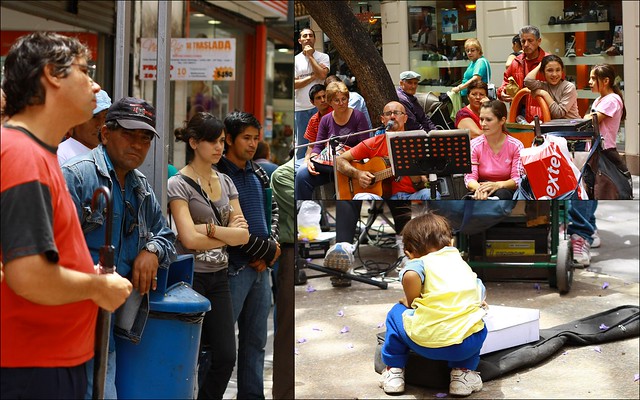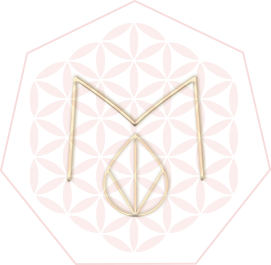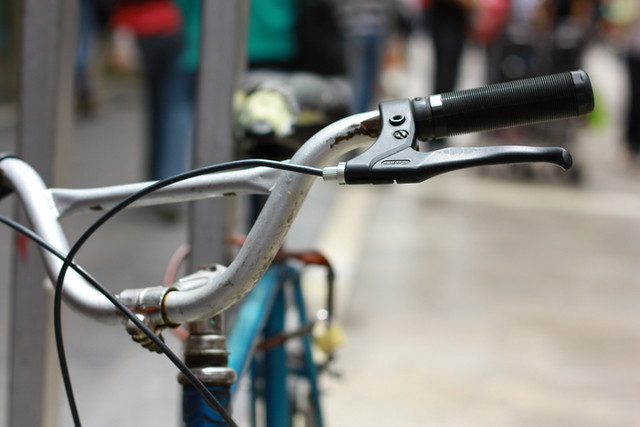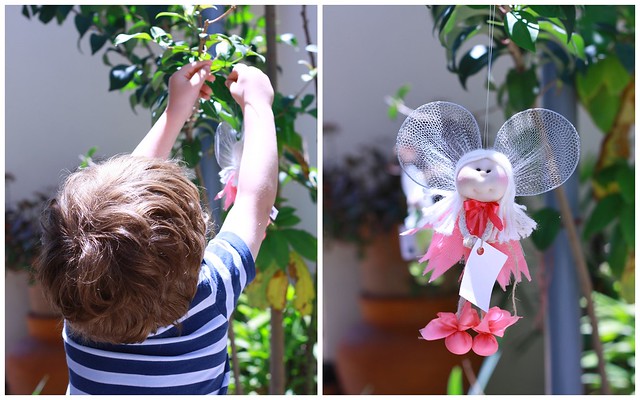Good morning dear friends! As I promised, here’s my first post about our trip to Argentina.
It was a difficult post to write because, how to describe one’s own city, how to accurately portray it for those who have never been there, how to show what the place means to us in a few words, in a few pictures? There was also the issue of time and distance: the time that has lapsed since I stopped living there, the huge physical distance that separates me from it.
In less than a week it will be 7 years since I left Córdoba never to go back and, even though I have visited a few times, every time I go I feel that so much has changed that I find it almost hard to recognize the city. Sure, the basic landmarks are still there, but just as I have changed myself, the city’s soul and rythm seems to have mutated as well. In this last trip, in particular, I experienced the interesting paradox of knowing that, while probably Córdoba is the place I will always think about when I hear the word “home”, a great part of me has stopped belonging there. Perhaps this is because I have lived abroad the equivalent of 1/4 of the time I spent there, or perhaps it is because the memories I treasure are not shared by my husband or my children, so in a way they die within me. For my children, hearing about the places I visited when I was a child will not bring any memories of their own, it will probably be just another story of a foreign land where mum has spent some time, no matter how long or how important that time was.
As I write these lines I can’t help but think about my grandmother, Antonia, who arrived to Argentina from Italy at the age of 7, in 1929. She was a great story teller and, growing up, she would put us to bed telling us the tale of how she had travelled with her mother from her tiny town of Martirano, in Catanzaro, Calabria, to get the SS Giulio Cesare that took them to meet her father in Buenos Aires. It was a fascinating story because she would recount very vividly all the details of that journey, including the plants and flowers she had found when crossing a forest, the sound of the small streams of water they had crossed, and even the wonderful taste of the warm milk and bread she was served by her aunt the night before boarding for Argentina.
I have always wanted to visit Martirano since then, to walk those paths she walked just before her life changed so radically, to see those streams of water if they are still there, to touch the walls of the house that was her first home. Yet Martirano is not home and all my memories of it are from my grandmother’s long gone past. If I visited, I would probably not recognize anything she told me about the place, nor would I know anyone in town with similar recollections. As Córdoba continues to change and to evolve, I wonder if my children, no matter how many times we visit, will always see my own home city as I see my grandmother’s: a place that holds memories other than their own, a foreign land they recognize no more than any other city they may have seen in movies, or read about in books.
I wonder, also, how many of the landmarks from my past will still be there in a few years? And even, how much of what I think I remember was in fact as I recall it, and how many of my memories have in fact been affected by distance, by time, by nostalgia?
We arrived to Cordoba on the 1st of November after a long, exhausting journey from Belgrade through Paris and Santiago de Chile. As anyone travelling with small children knows, having a good trip requires a lot of preparation and a great deal of good luck. Prepare we did, but we lacked luck because Air France’s crew was on strike and, while our flight was only briefly delayed, the quality of the service was very much affected. Our food was served cold, there were no children’s menus or entertainment, our stroller was misplaced and delayed at every layover and the mood of the flight attendants was…disrespectful, to say the least. If you add to this the fact that the duration of the long-haul flight from Paris to Santiago was 14 hours, you may understand that by the time we reached Córdoba we were completely exhausted and feeling as if we had spent 1 week flying.
But that all changed as soon as we set foot at my mother’s home. It was Spring, the sky was deep blue, the air was fresh, the weather was starting to get warmer, and we were home- or at least I was. Luka and Zoe recognized my mum and started playing, happily in the dirt of the front garden. There was family, there were friends, there was lots of chatting, mate, criollitos and plenty of laughter. People were coming and going all the time, to the point that Luka and Zoe got so used to hugging everyone that crossed the door that they even tried to hug the postman !
The five weeks we spent in Córdoba were quiet and filled with events at the same time. We didn’t travel much (the pictures from cities in the surrounding hills are from a previous trip we did in Autumn 2006), or organize too many events, but we held an open house for friends and dear ones and this made those days always active, always busy. We took pleasure in strolling the streets of downtown with our children and, as we walked, I would find myself saying out loud things like “Here’s where I studied Law” “Here’s where I used to have coffee every morning after getting down from the bus that was bringing me from Anisacate” “This is the book store where I used to buy all my books and whose sellers know everything there is to know about Latin-american literature” “This is the building where I lived before leaving the country” “This is the café where my parents had their first date”. And in recounting those stories to my husband and my children, I began noticing the changes, the places that were no longer there, the buildings that looked different, how the city felt more crowded than before. And I began photographing everything, as a way of keeping my memories intact for the future.
I photographed the things that remained unchanged, the things I had missed and, also, the things that surprised me. I wanted to have a visual memory book so that, in future trips, I could compare and put together the pieces of the changing puzzle that is an evolving city.
The main thing I noticed, as soon as I arrived, is how alive Córdoba seemed to me, how vibrant. Perhaps this is because I find Nicosia to be very quiet, in general, but in any case, Córdoba was full of street performers, musicians, people walking, talking, laughing, getting in and out of buses, playing with dogs on the streets, having a drink outdoors.

The streets were full of colours and sounds and the flowers, oh, there were flowers everywhere. I had forgotten how easy it is to buy flowers in Córdoba and how I used to get a small bouquet of jasmines every week, when coming back from work.

And the jacaranda were in full bloom reminding me of the songs of my childhood.
Córdoba is Argentina’s second biggest city but it is by no means a megalopolis such as Buenos Aires. It was founded as “Cordoba de la Nueva Andalucía” (Cordoba of the New Andalucía) in 1573 by the man in the picture below, Jerónimo Luis de Cabrera (who was probably not reading the local newspaper at that time-;) ), who was originally from Sevilla and who is said to have named the city after the one in Spain because of the similar landscape, with its surrounding hills and rivers that traverse it.
Back in those times, Córdoba was inhabited by Comechingones, from whose native language people from Cordoba are supposed to have gotten the speach trait that characterizes us and causes those from other provinces to make fun of us: the extension of the first or second syllable of a word.
The city was apparently rather small at first, until the arrival of the Jesuits, in 1599. They set up self supporting “Estancias” in other cities of the province and converted Córdoba in the heart of their evangelical mission. In 1613 Bishop Fray Fernando Trejo y Sanabria founded the University (the 2nd oldest in South America), and the Higher Schools . This lead to Córdoba being known as “La Docta” (the studious, the city of Doctors).
After the Jesuits’ expulsion by Charles III in 1767, the Franciscans took over the University and during that period was created what is today the School of Law (formerly, “Facultad de Jurisprudencia” , teaching the “Catedra de Instituta”) which signalled the introduction of non-religious studies in the curricula. The Franciscans were replaced in the direction of the University in 1808 and, after the declaration of Independence and the proclamation of the National Constitution, the University was finally nationalized in 1856.
In 1918, a revolution was initiated in the University of Córdoba, that extended to many other Universities in Latinamerica, in what is known as the “University Reform” or “University Revolution” (And let me tell you that initiating revolutions is one of the things that has always characterized my home city). This reform lead to a democratization of the curricula and, later, to the Universities autonomy and autarchy.
In the 30’s 40’s and 50’s, several companies such as FIAT and others set up factories in the city and this brought greater expansion. People (including newly arrived European immigrants) started migrating from other provinces. Unions were formed and became stronger and it was their forces, together with those of the mass of students that populated the city that lead, in 1969, to the popular revolution against the military government known as “El Cordobazo”.
Therein lies the paradox: Córdoba has historically been conservative, both politically (The Vice-king Liniers organized from it the counterevolution against the first national government, and the city and province have traditionally voted differently than the rest of the country in national elections) and religiously (There are 7 Catholic churches alone in an area of 400 m2 in the city’s downtown), yet is also a city of revolution and of change.
Geographically speaking, the city is a square with very distinct areas, surrounded by hills and traversed by the Suquía river. The dam that surrounds the Suquía and that was built to prevent floods constitutes the city’s most beloved landmark, La Cañada: a stonework canal, surrounded by trees that are always green and which you can see in the picture that opens this post. As for the city itself, it is mostly one of houses, not buildings, because the inner dream of all “cordobeses” (people from Cordoba) is a piece of land where to have a garden and a swimming pool to enjoy the warm months of summer.
The city’s cultural life is plentiful: there are many museums (my best friends work at the University Museum (Museo de la Manzana Jesuitica) and at the Anthropology Museum so I am a bit partial towards those two, but all of them are nice visiting), including a Children’s museum called “Museo Barrilete” which is a true delight for children of all ages. In it, children can learn about physics, play with bubbles, make their own masks, learn origami, build their own toys and even learn carpentry so, if you visit Córdoba with children, I highly encourage you to bring them to Barrilete (which means “kite”) for a wonderful afternoon. The city also has a zoo, many parks, movie theaters and frequently holds free (or very affordable) open concerts, open markets and different fairs.
In addition to this, Córdoba’s added beauty lies in the proximity of beautiful mountain villages, which are really close to the city and which are perfect for a short getaway. The province of Cordoba is divided into 5 Valleys, with beautiful landscapes, cities full of history and different traditions such as Alta Gracia, Villa General Belgrano, La Cumbre, Jesus Maria, Mina Clavero, and many others as well as fun-packed activities such as trekking, orienteering, paragliding and others. In the hills are also the old Jesuit Estancias, which are now beautiful museums where you can learn about our past, and which have been declared World Heritage by UNESCO. During the summer (January and February), there are plenty of folkloric festivals in almost every little town, as well as during Easter.
Córdoba is, for me, my first home, a place where there is always time for friends and chatter and, since this past trip it is also so much more. It is also the place where Luka and Zoe discovered the night, the moon,the stars, the joy of playing with dirt and running after dogs.
It is the place where they tried to use their first tricycle, where they enjoyed the company of little ones their own age, where they learnt to use a swing by themselves and where gardens have fairies that protect the trees.
I hope that, if one day you go to Argentina, you’ll take a few days to visit Córdoba. And if you do, please drop me a line and let me know how it went. It will make me very happy.
Have a wonderful weekend!







Que linda tu ciudad ! Y tienes razón con lo de pertenecer y no pertenecer, y con lo de compartir recuerdos e historias (lo digo por haber escuchado las de mi papa y mis tios cuando estuve en Suiza, por saber cosas solo de “oirlas”).
Me ha hecho mucha gracia que la etnia se llame comechingones, en México la palabra “chingar” quiere decir muchas cosas pero comechingones seria algo asi como los que comen MUY MUY MUY bien. En mi ciudad tambien hay un lugar que se llama “La Cañada”, es mas bien un fraccionamiento donde habia una fuente de agua que es la que abastecia un acueducto que llegaba a toda la ciudad.
Por cierto tambien esta lleno de jacarandas, y como ha crecido !
Las ultimas fotos de Luka y Zoe son muy lindas, la del perro y la de las hadas son muy tiernas.
So beautiful of a post and your pictures captured your trip beautifully. I think it is wonderful that you share your memories with your children, yes perhaps not their memories, but one day they will want to go back and see the places that you showed them and shared what it meant to you!
You have such an amazing vibrant past and I think that you may have inherited your grandmother’s way of sharing such great memories!
Thanks for giving me a fabulous armchair travel today!
Thank you dear Tracy! I’m very happy that you liked the post 🙂
Muchas gracias querida Amanda.
Yo creia que “chingar” era una mala palabra en Mexico…pobres mis nativos, lo que se les reirian en tu pais! 😉
Si, chingar es una mala palabra, viene siendo algo asi como j*d*r. Pero tiene una infinidad de usos, entonces alguien o algo que es “chingon” es algo que esta muy muy bien es como una exclamacion de mucho enfasis positivo.
j*d*er en Argentina es molestar, pero se a lo que te refieres. Qué gracioso que sea positiva y negativa al mismo tiempo!